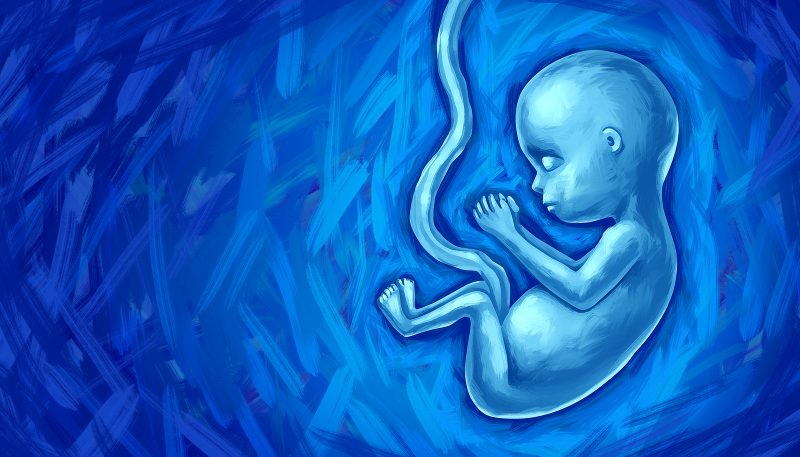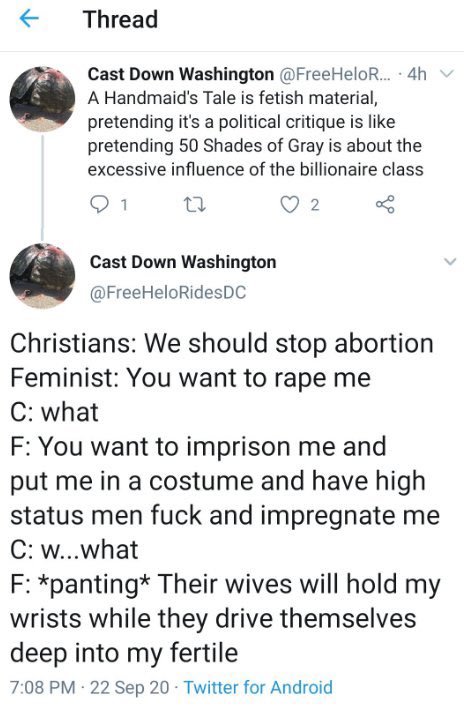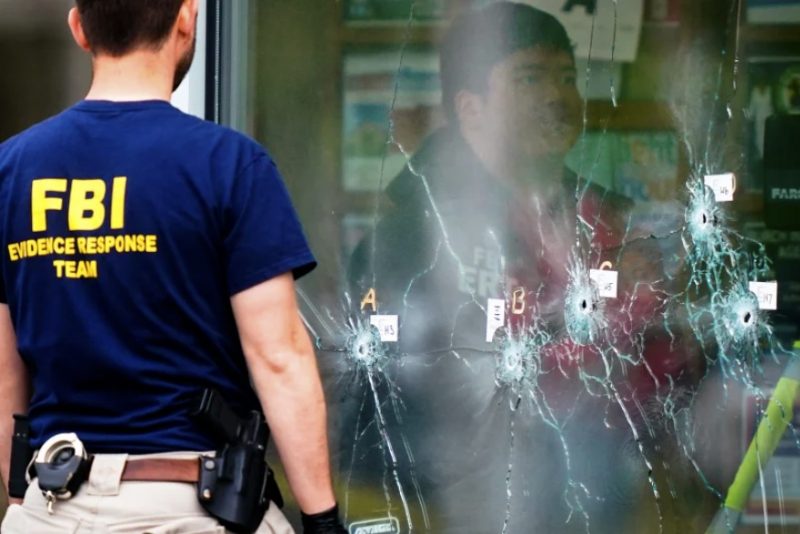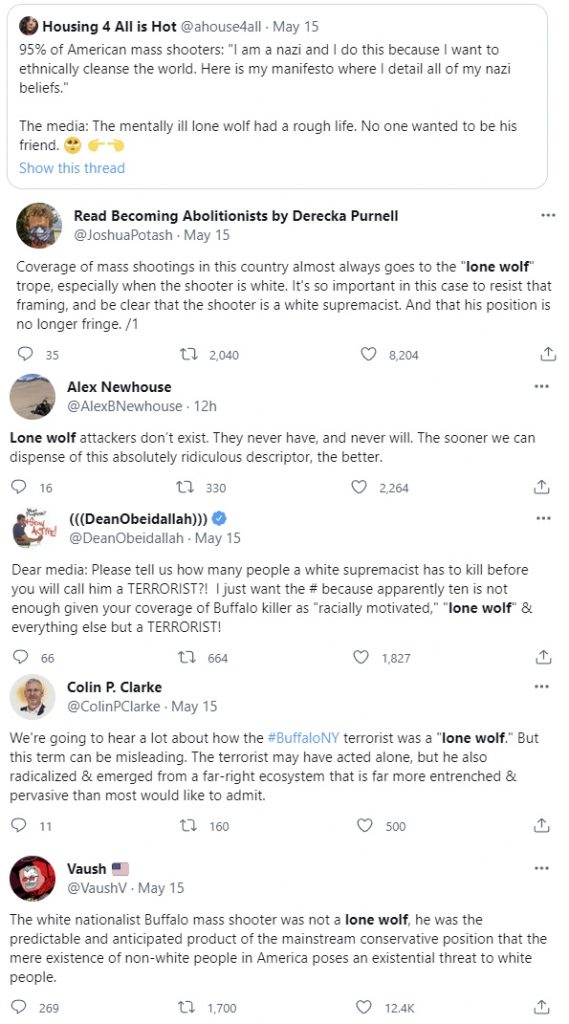
I enjoy reading Paul “the Internet’s impact on the economy has been no greater than the fax machine” Krugman’s opinions on things. I learn so much from his large and abundantly folded brain. For example, here he argues that conservatives are mostly incapable of modeling the thought processes of liberals.
[…] if you ask a liberal or a saltwater economist, “What would somebody on the other side of this divide say here? What would their version of it be?” A liberal can do that. A liberal can talk coherently about what the conservative view is because people like me actually do listen. We don’t think it’s right, but we pay enough attention to see what the other person is trying to get at. The reverse is not true.
You try to get someone who is fiercely anti-Keynesian to even explain what a Keynesian economic argument is, they can’t do it. They can’t get it remotely right. Or if you ask a conservative, “What do liberals want?” You get this bizarre stuff – for example, that liberals want everybody to ride trains, because it makes people more susceptible to collectivism. You just have to look at the realities of the way each side talks and what they know. One side of the picture is open-minded and sceptical. We have views that are different, but we arrive at them through paying attention. The other side has dogmatic views.
What do you think? Yes, it’s smug and a bit self-congratulatory. Paul Krugman has identified as one side of the political divide as wise and open-minded, and by complete coincidence it’s the side he belongs to.
But maybe there’s something to what he says. I’ve long felt that conservatives often do a poor job of understanding the liberal view of things, and that liberals typically do a better job of understanding their opposition.
The repeal of Roe v. Wade in the United States has proven that I was wrong. American liberals, on this issue, have no idea why conservatives believe the things they do, attributing to them instead cartoon villain motives and implausible conspiracy theories that make George F Will’s “trains = collectivism” theory seem the rarified heights of sanity.
On the day the news was announced, perhaps 10-20% of Twitter changed their avatar to either a coathanger or a Handmaiden outfit. This was the start of an attack on civil rights that is solely motivated by oppressing women. Reddit had some kind of psychotic break. Many of the posts below had hundreds or thousands of upvotes.
How to turn women into “breeding cows”?
-
Overturn Roe v. Wade
-
Forbid contraception
-
Criminalize any attempt to get an abortion out of State
-
Try making it these applied all over the country
These religious crazies are spiraling down and trying to create an american white christian Theocracy!
And
The white supremacists are trying to force breed more white supremacists…and yes, I said it!!!
And
It’s a forced-breeding program. Women are chattel to these people.
And
In a 6-3 decision, women are now brood mares for the state.
And
I wonder if there’s any correlation between RvW being overturned and the U.S have consistently declining birth rates for years. If people stop having children, there’s no more generations of workers to exploit and propagandize through the school system.
And
No. Call it what it ultimately is.
In general pumping the birthrate will be good for the economy in the long run, if traditional economics stays true, but it’s hard to imagine that the GOP is thinking more than 2 elections ahead.
And
That’s what this discussion has always been about. Are women people or are they incubators?
But the pro forced birthers are unwilling go actually come out and say that because then their obvious misogyny will become apparent.
And
Gotta keep the poors churning out more exploitable youths to feed the military, prison and labor industrial complexes.
And
What they’re hoping for is more republican voters. They know they’re becoming the minority and they need more kids born in the US to attempt it.
And
No one would ever willingly fuck a republican and carry it’s gross little fucking monster seed to term, so they gotta boost those rape baby numbers.
Republikkklans envision a world where they can rape a woman and force her child into slavery, meanwhile everyone else is too distracted all the goddamned bullets to focus on their legion of evil.
And
It’s slavery with extra steps. Lots of these kids will eventually end up in jail and using Prisoners as free slaves has been a thing for a long time in the US.
Basically, how do you know what’s on a person’s mind? You really can’t. The fastest way to get an idea is to ask them why they believe what they believe: sometimes they lie, but you can’t assume that as a default explanation. Anti-abortion activists claim to be motivated by the idea that a fetus’s life has some kind of moral value. Absent other evidence, they should be believed.
George Carlin may have been patient zero for this kind of “Christians oppose abortion because they want more soldiers” stuff (though here’s an earlier version by Marge Piercey). He was a cynic. A small amount of cynicism can be healthy, just like a small amount of wine can be healthy. George Carlin was a falling-down drunk on the verge of liver failure.
Conservatives want live babies so they can raise them to be dead soldiers. Pro-life… pro-life… These people aren’t pro-life, they’re killing doctors! What kind of pro-life is that? What, they’ll do anything they can to save a fetus but if it grows up to be a doctor they just might have to kill it? They’re not pro-life. You know what they are? They’re anti-woman. Simple as it gets, anti-woman. They don’t like them. They don’t like women. They believe a woman’s primary role is to function as a brood mare for the state.
How does he know that this is what they believe? He doesn’t, and also probably doesn’t care. There might be seven words you can’t say on TV, but the market for lazy caricatures of one’s political opponents is as wide and as deep as the ocean.
Speaking of lazy caricatures, this is another one. But at least it’s funny.


‘”And here you will stay, Gandalf the Grey, and rest from journeys. For I am Saruman the Wise, Saruman Ring-maker, Saruman of Many Colours!”
‘I looked then and saw that his robes, which had seemed white, were not so, but were woven of all colours. and if he moved they shimmered and changed hue so that the eye was bewildered.
‘”I liked white better,” I said.
‘”White!” he sneered. “It serves as a beginning. White cloth may be dyed. The white page can be overwritten; and the white light can be broken.”
‘”In which case it is no longer white,” said I. “And he that breaks a thing to find out what it is has left the path of wisdom.”
– JRR Tolkien, Lord of the Rings: The Fellowship of the Ring – Book II Chapter 2, The Council of Elrond
I, like many people, shudder over Thomas Kinkade paintings…but why is this? What, exactly, is bad about them?
I read a Reddit discussion on the topic. Most of the respondents answerers couldn’t answer except through “opium contains a dormitive principle” tautologies.
It strikes me as kitschy, and kitsch is not art.
it is art for the lowest common denominator.
His marketing strategies are targeted at lower class Americans. His works are not owned by the upper classes, which is notable for any product but especially art which always purports to be noble (and Kinkade more than most artists wants to be perceived as high-minded).
it’s not Art; on the spectrum of art, it falls squarely in the “decoration” camp. There’s no deeper meaning, no depth, it’s simply trying to be a pretty picture
It’s considered bad taste because it marks you as someone who isn’t familiar with much art, or hasn’t thought much about it. If you’ve seen a lot of art, spent time paying attention to it, or compared pieces, styles and movements, you will probably find Kinkade very dull.
“he sucks, he’s bad, if you like him you’re an Ump-Tray Upporter-Say, etc”
Perhaps Kinkade’s work is so obviously bad that it’s not even worth analysing. It’d be like trying to quantify why a cockroach is so repulsive. Art is about instinctive, unlearned responses, after all. There’s little need to “analyze” art when the response is the aesthetic equivalent of a white phosphorous explosion.
But refusing to analyze things can lead to blind spots – it’s still interesting to consider what makes a cockroach more disgusting than, say, a woodlouse or a mouth. And it’s interesting to consider why Kinkade’s art is uniquely bad, when other similar art isn’t.
With respect to Gandalf, it’s time to break apart the Painter of Light.
1) Kinkade’s art communicates nothing
Art is defined as an artist’s attempt to create meaning in the mind of the audience. What’s meant by “artist” (and “meaning” and “audience”) is up for grabs. But there always has to be some element of communication. Art is the bridge for the artist’s ideas.
This is what separates artwork from wallpaper. It’s also why I have reservations calling the work of Dalle-2 “art”, even though it might look like it.
The triumh of the modernist movement was to understand that art is also an interpretive process. A work of art can be understood differently by different people, and the meaning might change depending (: the meaning can va).
But by the same token, it’s not totally up for grabs. But there has to be something. Art exists to say things. Just as language exists to say things.
Kinkade’s paintings say “goo goo ga ga”.

They’re bland collisions of soggy, overly sentimental imagery and branded Disney characters. The aesthetic impact they have (for me, sickened), seems almost accidental: Kinkade seems to have painted each one with dispassion bordering on contempt, working down a checklist of “nostalgic” signifiers.
2) He doesn’t understand that less is more
Do you like beer? Enjoy a cold brew over dinner, perhaps?
Well, Thomas Kinkade just threw you into an enormous 5000 gallon vat of beer. Salud!
Any chance his paintings have of creating a nice mood is spoiled by the fact that he does it to excess. When looking at Kinkade’s paintings, you get the feeling that you’re looking at a fighting game where the “Cute” and “Whimsy” sliders are stuck on maximum. This is the essence of kitsch. Sometimes this creates a ludicrous effect: with elements of the paintings not even seeming to exist in the same world. For example:

It’s the middle of the day. But every window is aglow with firelight, as would only happen at night. And who would build a cottage on low ground right next to a stream? Streams flood. After a week of heavy rain, the water would be up to the wainscoting. These are little things that shatter the impression of a unified world.
3) Almost all interesting art grapples with ugliness in some way
I don’t mean it has to be about or predominently feature ugliness. But Kinkade’s paintings deliberately do not feature it at all. As per his instructions:
The concept of beauty. I get rid of the “ugly parts” in my paintings. It would be nice to utilize this concept as much as possible. Favor shots that feature older buildings, ramshackle, careworn structures and vehicles, and a general sense of homespun simplicity and reliance on beautiful settings.
The image above shows off this philosophy in action.
He wants firelit windows…but doesn’t want a night scene. Because night is scary and forbidding. Very few Kinkade paintings depict night, and the ones that do normally turn it into a ghoulish purple-pink twilight that resembles a scene from an alien planet.
Here’s another one:

Another Kinkade signature move is branded Disney characters. Here he tries to capture the entire story of Bambi on one frame, and produces an overstuffed exercise in claustrophobia. Aren’t there sad and scary parts in Bambi’s tale? Not according to Kinkade.
There’s an essential phonyness to Kinkade’s work that shines through even when he adapts Disney. His work is too idealized to be realistic, yet too enslaved to familiarity and folksiness to succeed as a work of imagination or fantasy.
3) He was not what he appeared to be.
Kinkade was a self-promoter and an entrepeneur: being a painter was incidental.
Yes, he worked hard on his paintings. Not because they had value in themselves (even as investment assets, many people who were suckered into buying them found themselves holding unsellable and unvaluable paintings), but because they were his brand, his business.
“Putting Thomas Kinkade in an art-historical context is like trying to put Jack Chick in the context of the illustrated comic strip,” – Peter Frank. A striking comparison.
Technically, Jack Chick is among the most successful comics creator of the 21st century. But it doesn’t seem right to describe him as a comics artist. He was a religious evangelist: the comics were a means to an end. Likewise, Kinkade’s pose as a “painter of light” is a cheap mask over the kind of hyper-aggressive Type-A personality cluster you see in Wolf of Wall Street and Glengarry Glen Ross. The type and tries to “close” three grannies before lunchtime.
His skilled technique makes it worse, in a way. If his art was dashed-off rubbish by an amateur, its lack of quality would be understandable. Instead, Kinkade worked hard to make his paintings suck.
His business-focused approach was unusual among artists. First, he identified a need in the market. Cosy, nostalgic imagery. Then he “iterated over a cycle”, in business speak, eventually achieving product market fit. He made himself tens of millions of dollars selling fairly worthless art.
Artists do not normally trademark names for themselves. Nor do they mass-produce their own work. Kinkade was incredibly succcessful, in the sense of making money. He was also so bad that his paintings almost have secret lives as depictions of folkcore dystopias. (This page describes Kinkade as the “Painter of Shite”, which is so banal and obvious that it might be the Thomas Kinkade of insults.)

There was a mass shooting in Buffalo, NY. Ten dead.
This is a bigger deal than the ~60 murders that happen in Buffalo every year because of the shooter’s beliefs, which were naughty. He belonged to the far right. He believed in something called “The Great Replacement”. The FBI is conducting forensic analysis of his keyboard to see if he ever typed offensive hate-slogans like “learn to code” and “subscribe to Pewdiepie”, but sadly he probably did.
Social media is effervescing with the usual mixture of anger, sorrow, sloganeering, conspiracies, and bizarre object-level claims about reality. In particular, people seem fascinated with the idea that the media ignores right wing terrorism; or that it calls terrorists “lone wolves” if they’re white.
For example:

Look at the breezy confidence of these tweets. Look at the thousands of likes they’re getting. They’re not saying the media might call him a lone wolf. They’re saying it will. That it has.
Is this true? I’m going to cheat by actually looking at what the media’s saying.
CNN: “The 18-year-old man who allegedly shot and killed 10 people at a Buffalo supermarket Saturday afternoon was motivated by hate, authorities said.”
ABC: “Authorities say the shooting was motivated by racial hatred.”
Axios: “The suspect allegedly published racist writings before the attack.”
Fox News: “U.S. Attorney General Merrick B. Garland called the attack ‘a hate crime and an act of racially-motivated violent extremism.'”
NBC News: “The Buffalo supermarket shooting suspect allegedly posted an apparent manifesto repeatedly citing ‘great replacement’ theory”
Buffalo News: “Racist manifesto details hateful views, methodical planning of accused gunman”
LA Times: “Buffalo shooting is an ugly culmination of California’s ‘great replacement’ theory”
WSJ: “the writer describes himself as a fascist, white supremacist and racist”
The Grauniad: “Hate-based crime has been getting worse in recent years, largely cultivated in the cauldron of darkest reaches of the internet”
Associated Press: “racially motivated violent extremism.”
Ten stories from large, reputable sources.
Zero out of ten describe the attacker as a “lone wolf”.
Ten out of ten connect him to right wing causes, or quote officials who have done the same.
In fact, Googling “Buffalo + ‘lone wolf'” serves no relevant results, just people handwringing about how everyone is calling the shooter a lone wolf.
This is the epitome of “making up a guy to get mad at”. Guys, nobody is doing this thing. Nobody at all. “The sooner we can dispense of this absolutely ridiculous descriptor, the better.” We can’t “dispense” of a descriptor that nobody’s using.
Twitter almost feels like a window into an alternate universe at this point. These people live in a world where every newspaper headline and news station chyron is referring to the shooter as a “lone wolf”. So why are their messages appearing in my world, where the most casual investigation shows this to be false? Is this a quantum entanglement anomaly? I wish these visitors from Dimension X would specify whether their tweets relate to their home planet or to the world that I live in, similar to how Marvel Comics distinguishes between Earth-616 and Earth-1610 timelines. It would be less confusing.
“Lone wolf” means something relatively specific: a terrorist that plans and executes an attack alone. It doesn’t mean “the shooter is unmotivated by ideology” or “the shooter has no political views”. No semantic boundary exists between “lone wolf” and “terrorist” and “white supremacist”. You can be all of those things at once. It’s less a question of “what did you do?” or “why did you do it?” and more a question of “who did you do it for?”
Did you blow up a migrant hostel with two tons of ANFO because you’re nuts? Then you’re a lone wolf. Did you do it on the orders of Combat 18? Then you’re part of a terrorist group. But there’s a huge fuzzy area in between, where blame becomes hard to assign. What counts as a terrorist group? What counts as acting alone? What counts as being nuts? We end up asking existential questions about the nature of free will and causality.
Yes, the killer was influenced by 4chan’s /pol/ board. Is the board causally responsible for the terrorist attack (in the sense that if moot hadn’t renewed 4chan’s domain name in 2004, ten people in Buffalo would now be alive?) Possibly. But that’s not the same as moral responsibility. It’s also possible that Payton Gendry was a psychologically broken person, and that without /pol/ he would have fallen down some other rabbit hole (or would have encountered the same reading material elsewhere, and would have been radicalized the same way). We can’t conduct a scientific a/b test involving two Payton Gendrons, one exposed to /pol/ and one that wasn’t. We’ll never know. Calling/pol/ a terrorist network feels very tenuous, in the same way as calling William Powell a “terrorist leader” because someone copied a bomb recipe from The Anarchist Cookbook.
A lot of people want to use the shooter’s ideological stance as a weapon against mainstream conservatism. If you’ve spoken critically about immigration, you’re promoting “Great Replacement” conspiracy theories, and a direct causal line can be drawn from you to the killer.
Twitter’s saying this, but Twitter is a bad website. Big boy journalists are getting in on the action too. Here’s Talia Lavin, in Rolling Stone: The Buffalo Shooter Isn’t a ‘Lone Wolf.’ He’s a Mainstream Republican
I don’t blame her for the headline, which she didn’t write. I blame her for the stuff after the headline, though, which she did.
The argument seems to be “Tucker Carlson is worried about birth rates declining, and the killer is worried about birth rates declining, so let’s draw a causal link between Tucker Carlson and the killer, based off no evidence. Don’t question it. They’re both on the same side.”
But there’s no sign that the killer was a Tucker Carlson fan, or had anything but contempt for the Republican Party. He cites NZ shooter Brenton Tarrant as an influence. From his manifesto:

On p157, he says “conservatism is dead. Thank god. Now let us bury it and move on to something of worth.” On p31, he includes an antisemitic collage of Fox News hosts, each with a Star of David over their faces. The implication appears to be “Fox News is run by Jewish globalists”. Was he really an avid Tucker Carlson fan?
The fact that he and Carlson may have agreed on some points is neither here nor there. This man – insofar as he has a firm political outlook – is probably an eco-fascist, as Tarrant was. I doubt Tucker Carlson has ever endorsed such a viewpoint on his show or even knows what eco-fascism is.
Your political opponents are not all secretly the same. This must be the most prevalent fallacy in politics. I used to see it on boards like Free Republic, where you’d hear about how Obama was going to rally his army of Islamic terrorists and Godless atheists and Marxist college grads and Hispanic anchor babies and devil-worshipping Satanists to overthrow America. They seemed to believe that all of these (vastly different) people were all working on the same team.
This isn’t how it works. Conservatism isn’t a monolithic hivemind any more than liberalism is, but Lavin has no interest in that kind of nuance. To her, life is a chessboard. There’s her side, then there’s the enemy side. All conservatives are working together, operating from the same playbook.
It’s an awful piece, full of emotive verbiage and factual mistakes (Alito did not coin the phrase “domestic supply of infants”, he quoted it from a 2008 CDC report about adoption). Also, it’s written like shit. Aren’t journalists supposed to be eloquent?
“The Republican Party’s embrace of nativism has been more of a full-on dash than a slow slide, and it has been catalyzed by the vast constellation of right-wing media.”
Can an “embrace” be a “full-on dash” which is “catalyzed” by a “constellation”? This sentence has five metaphors and four make no sense with any of the others.
“Far from ebbing as Trump has ceased to be the party’s sole center, however, the tide of white animus has become even more central to a new crop of Congresspeople and candidates.”
How does a “tide of white animus” become “even more central” to a “crop”? What’s a “sole center”? Is there any other kind?
But hey, I’m glad to have Ms Lavin writing this stuff, if it leaves her too busy to pursue her side hustle as an internet Nazi hunter.











